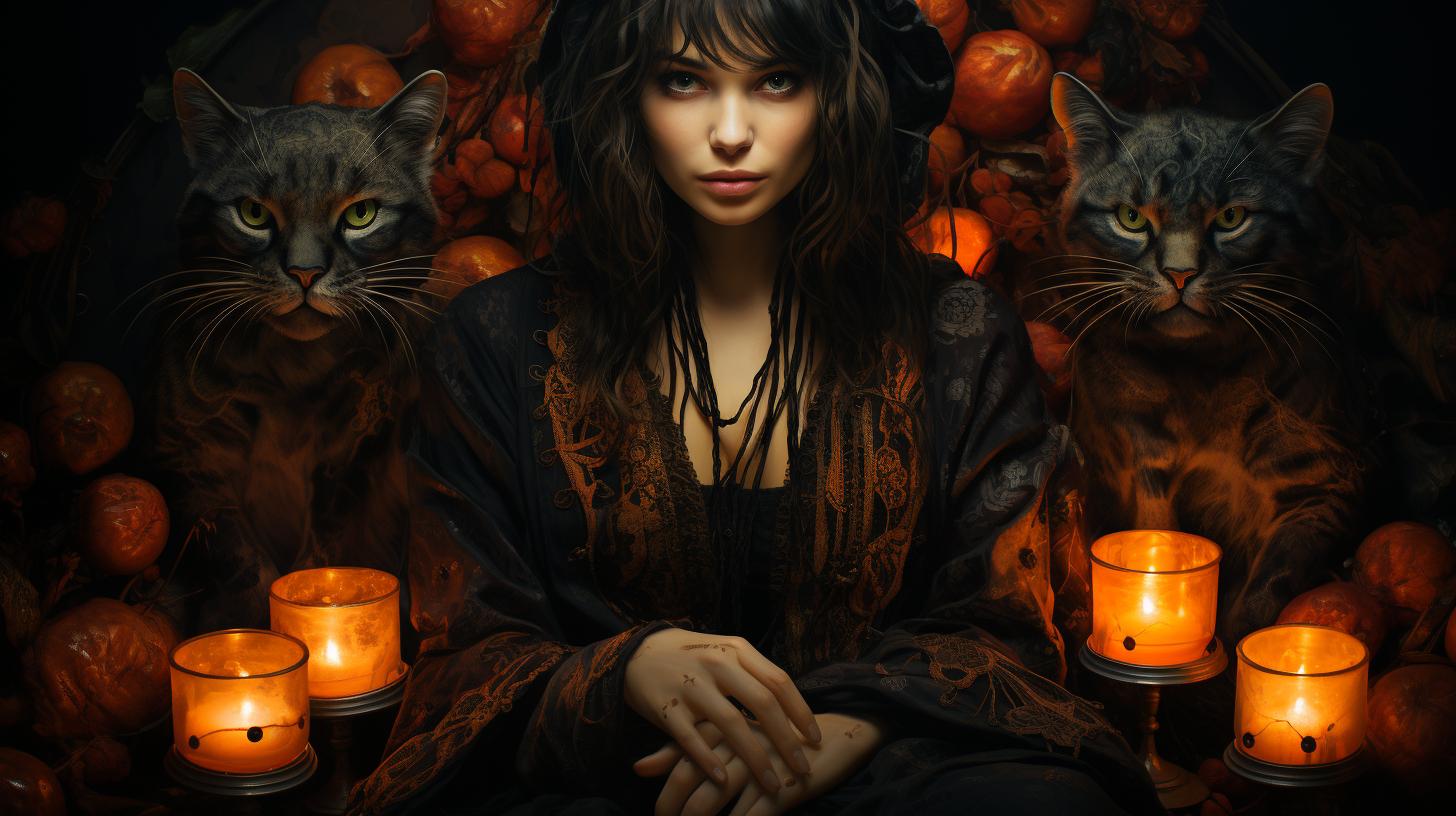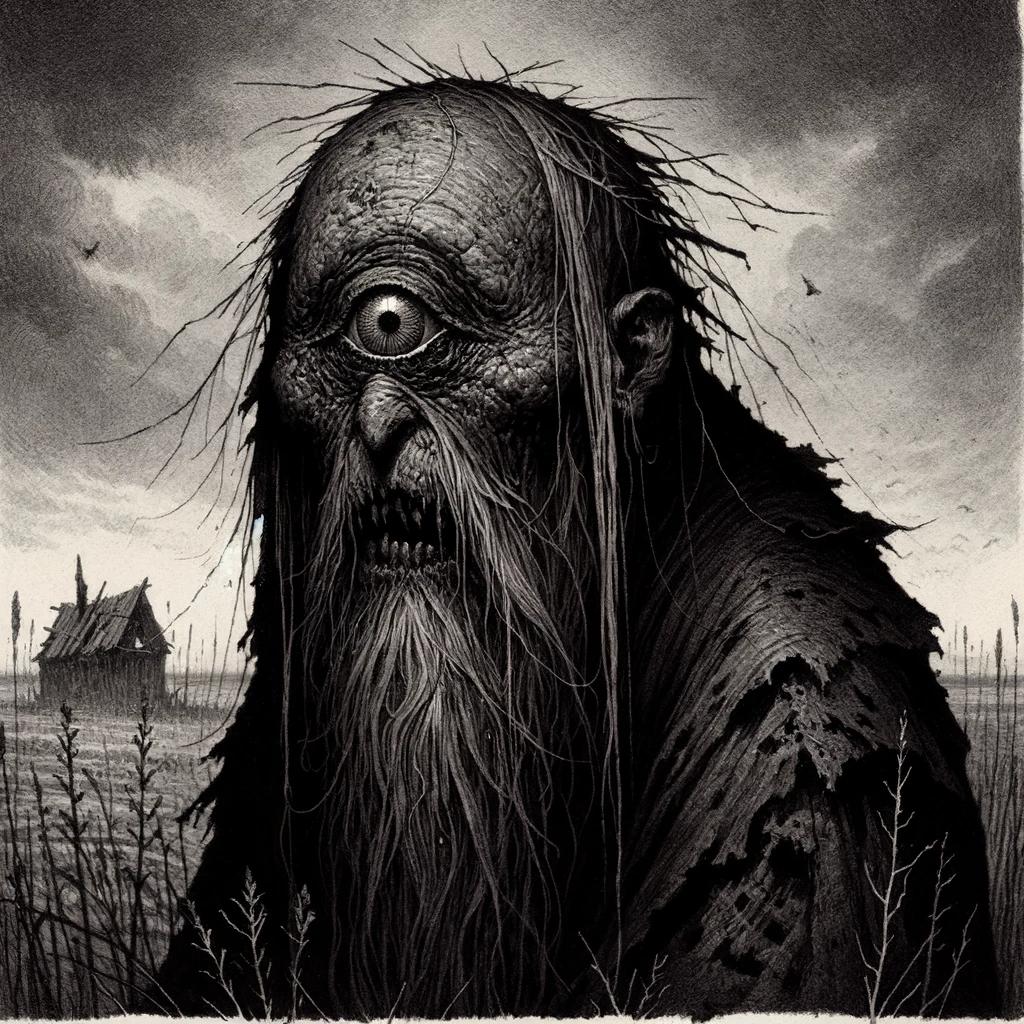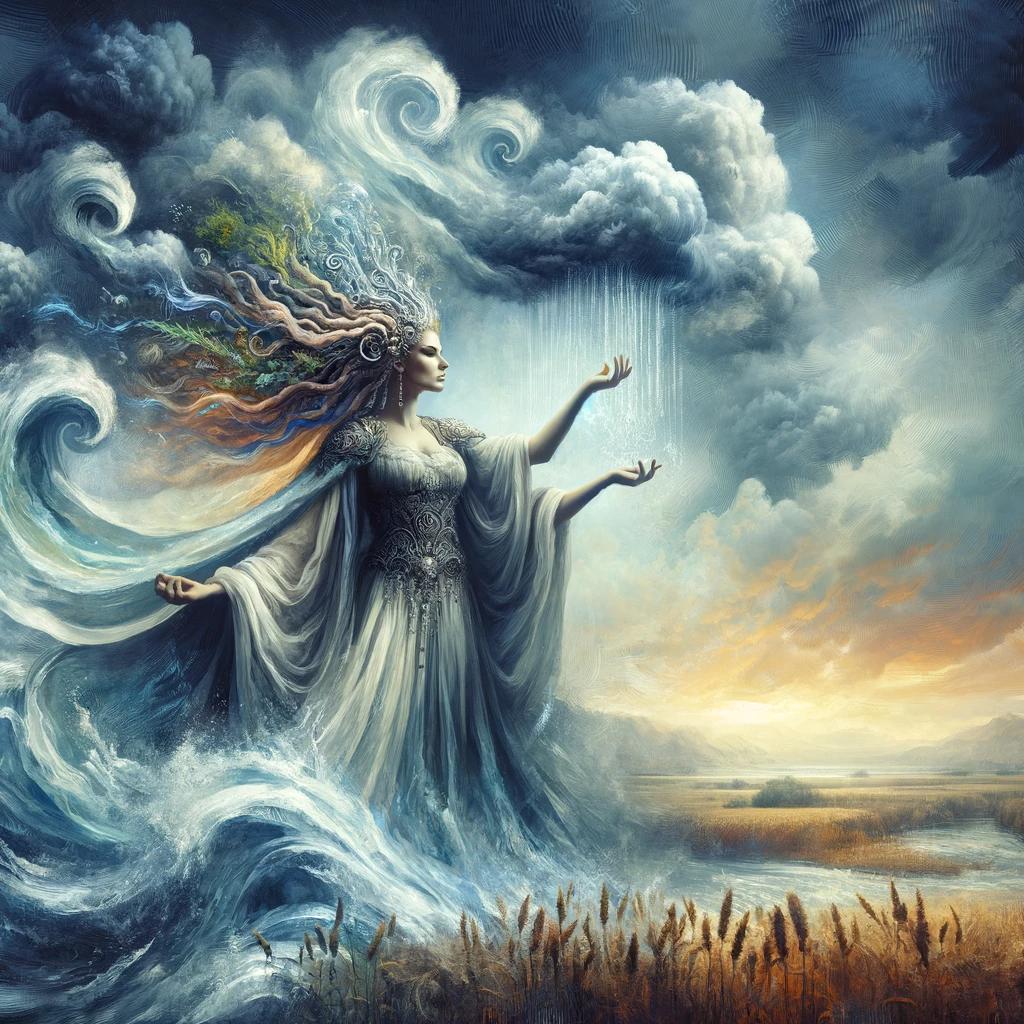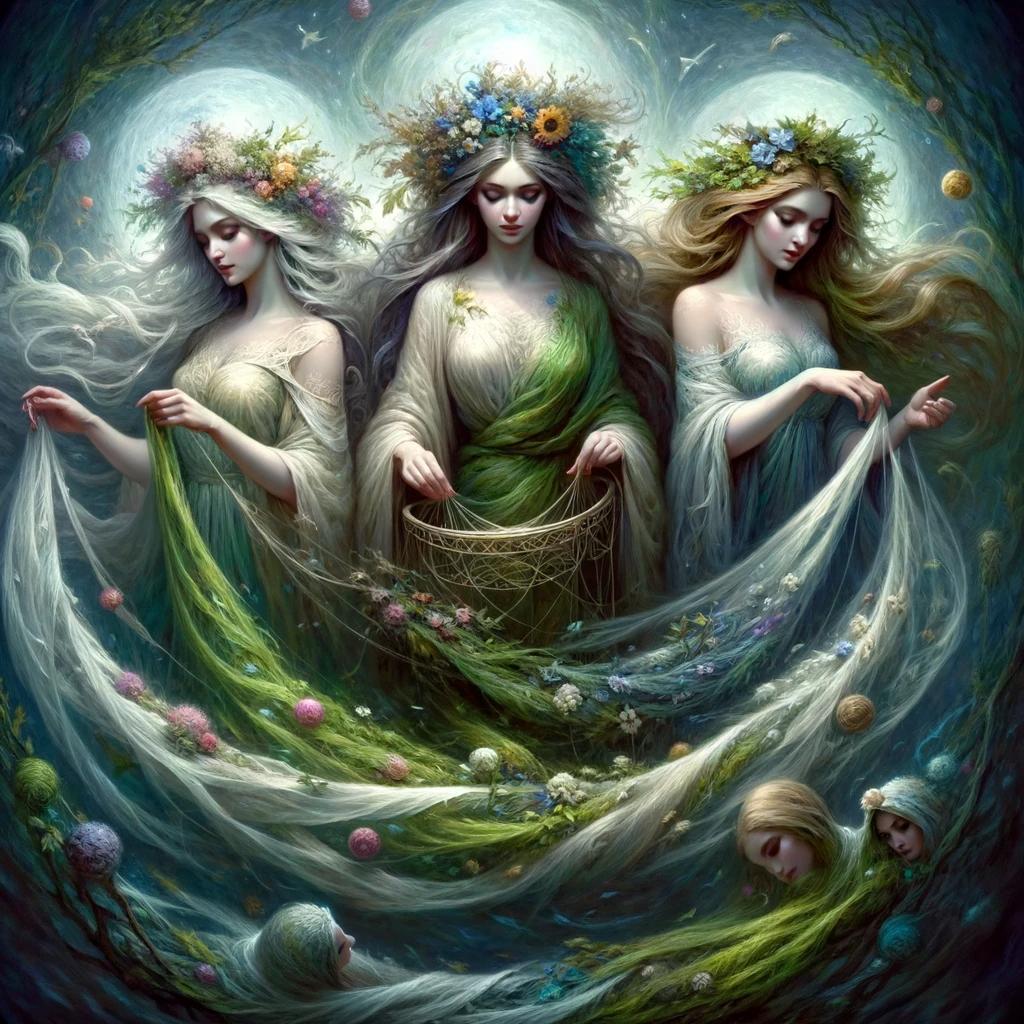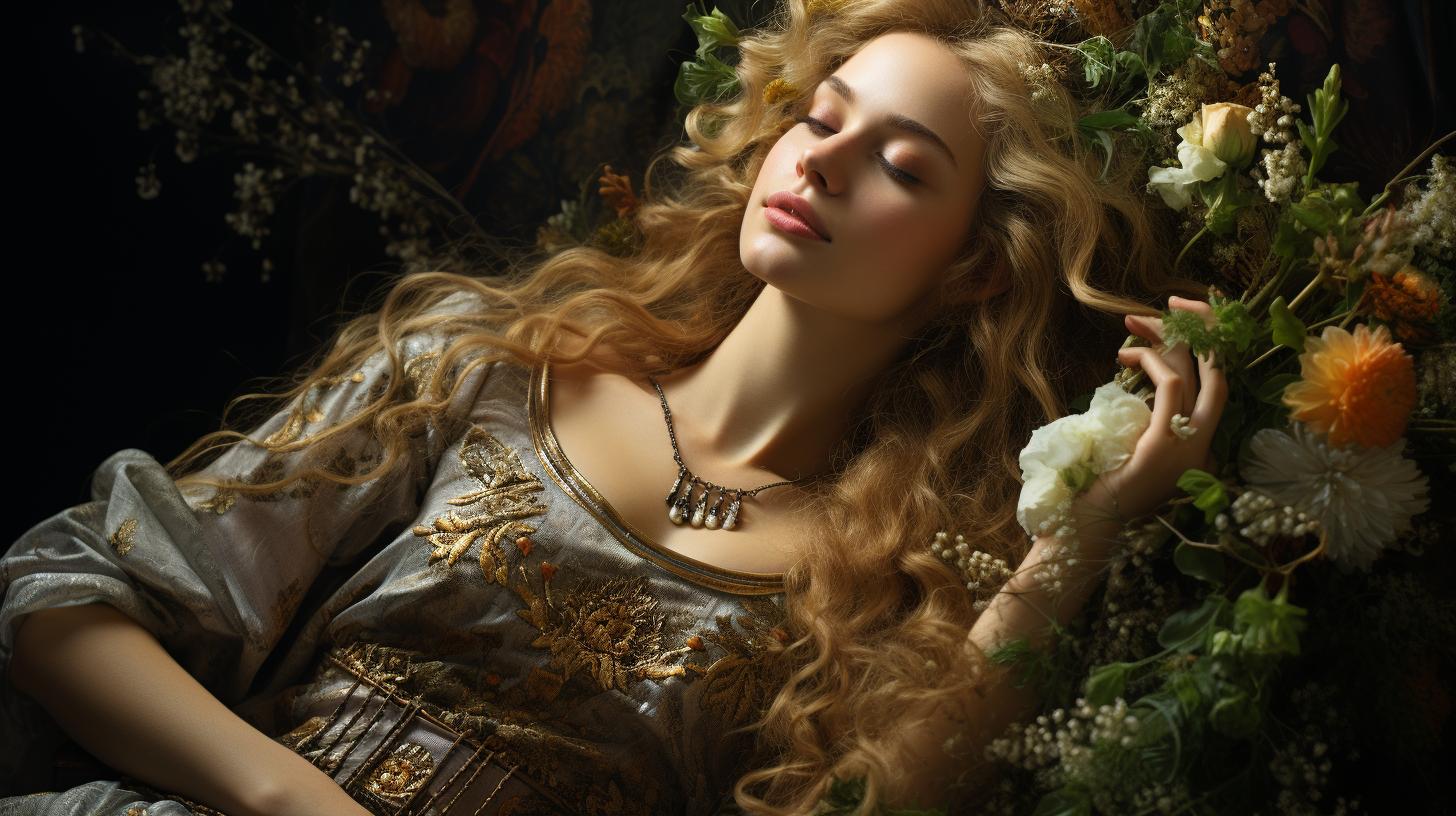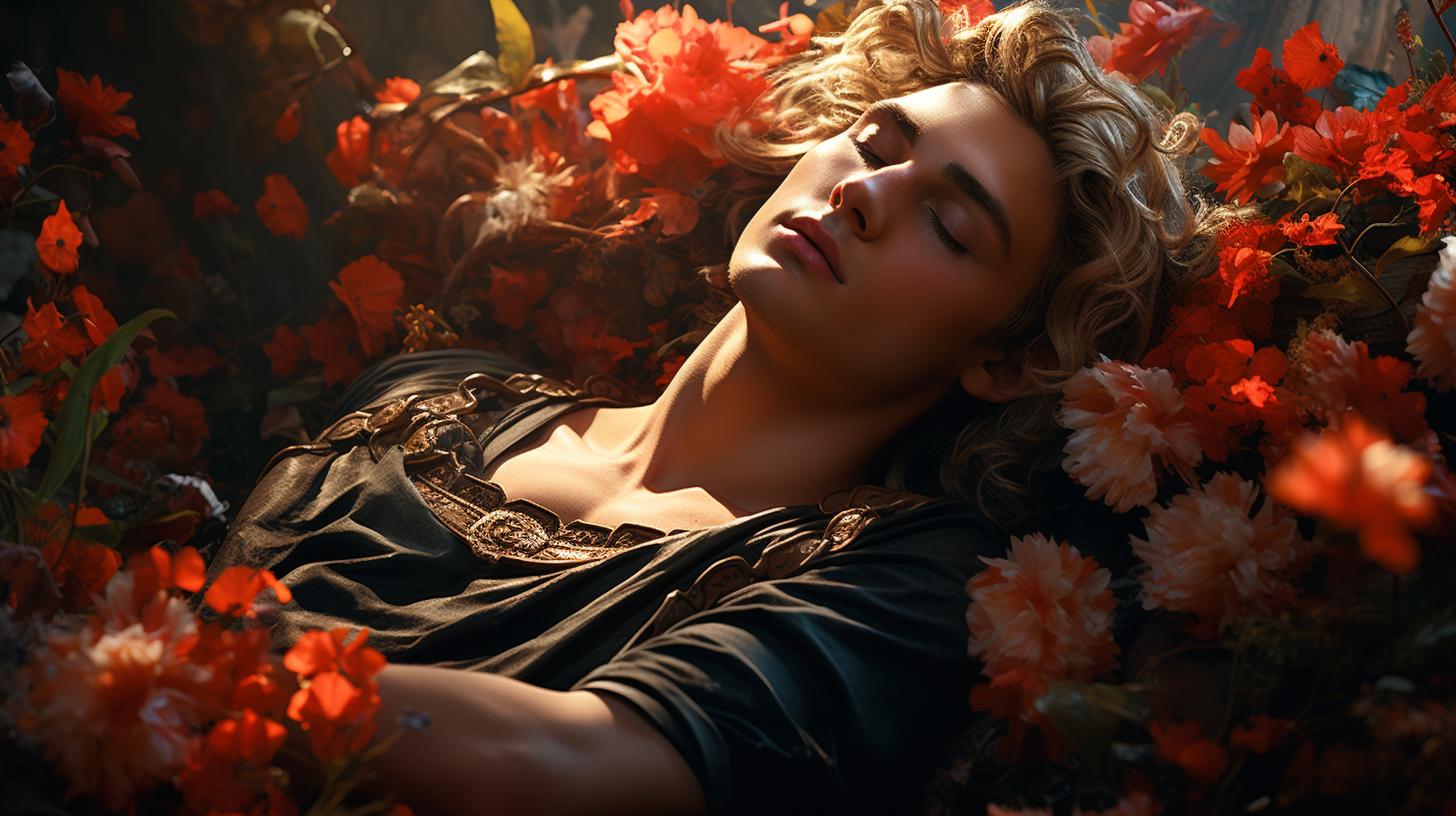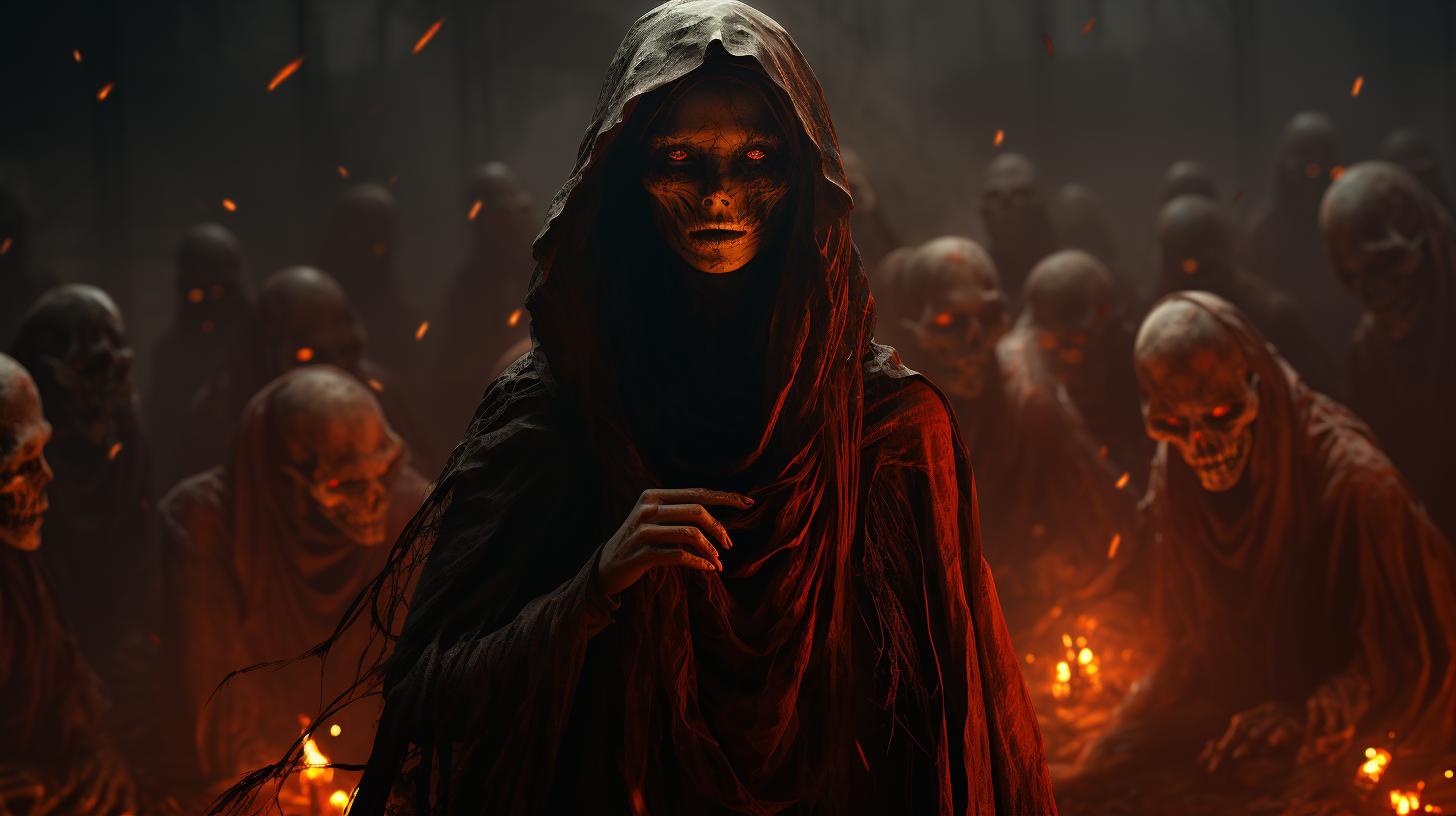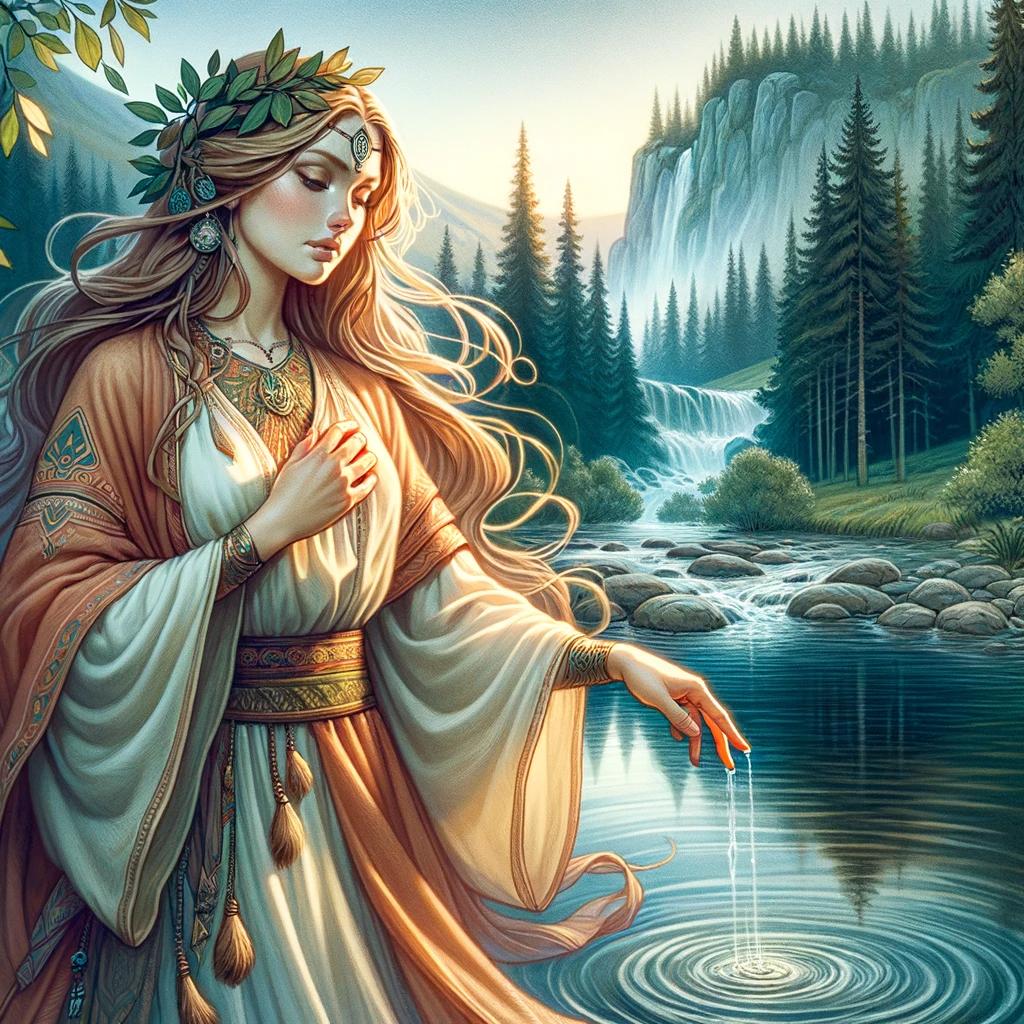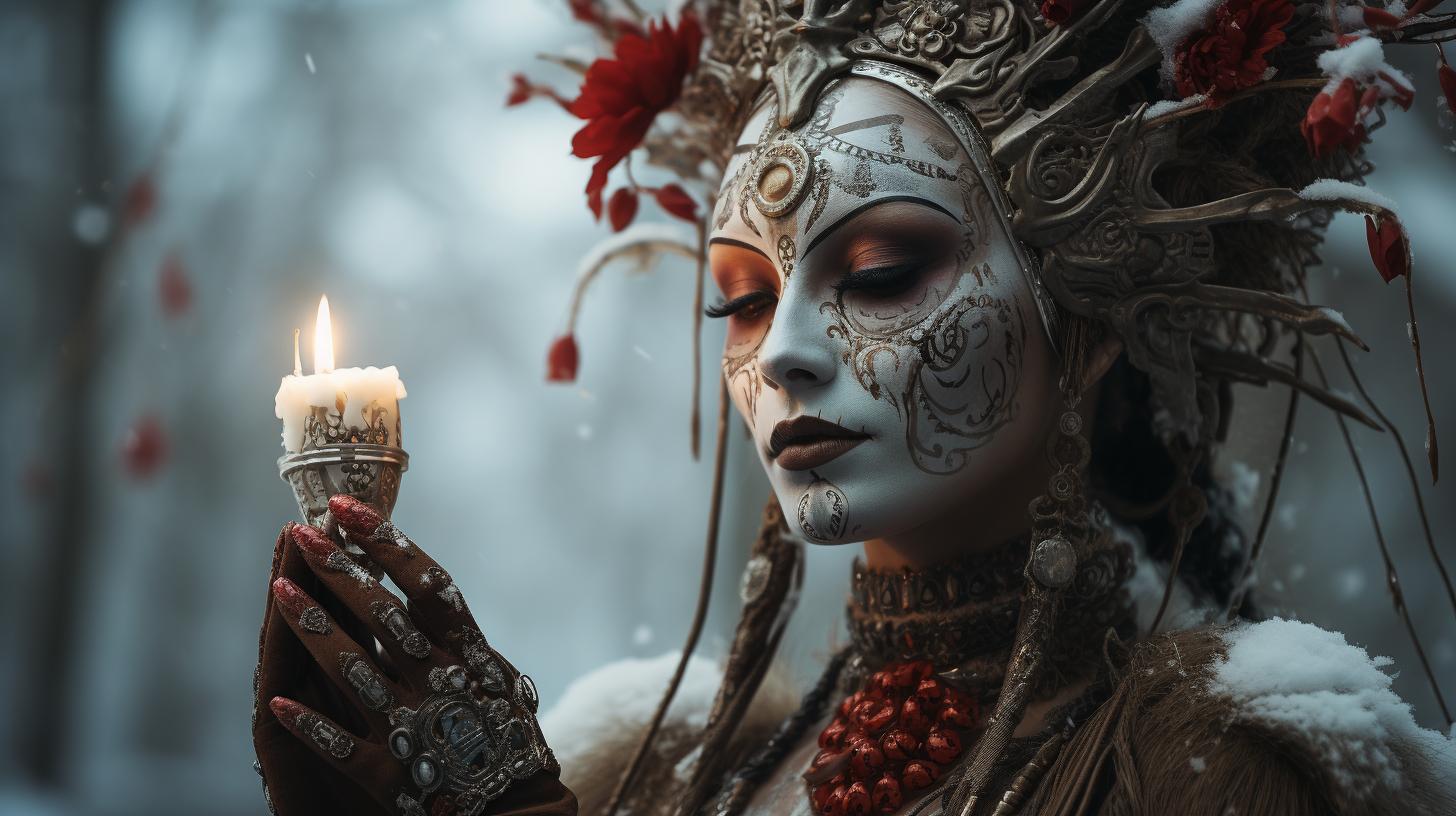Slavic Mythology: Uncovering the Secrets of Kikimora
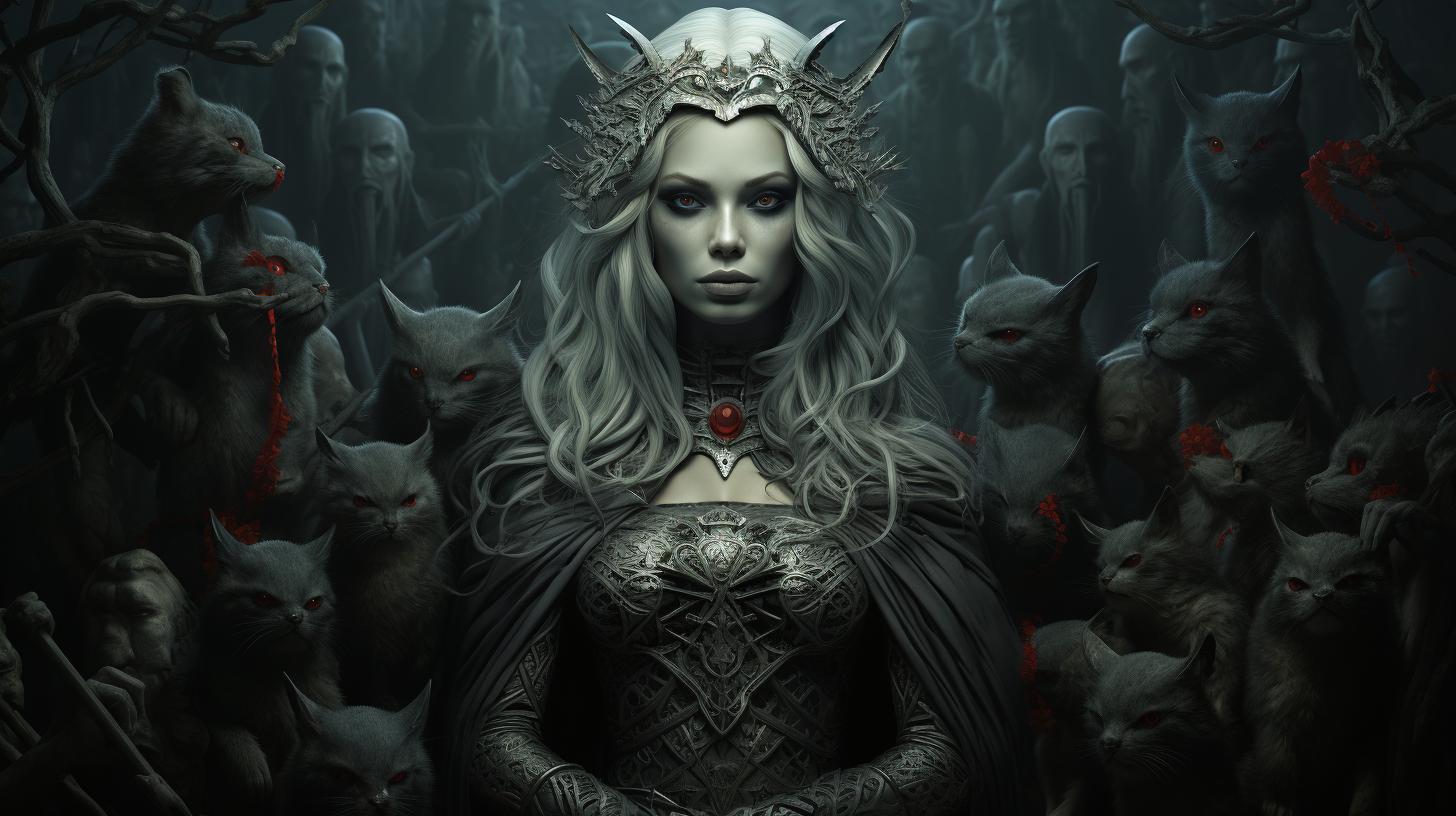
Kikimora, an enigmatic spirit in Slavic mythology, is both helpful and malevolent, its nature depending on the behavior of the homeowners. Believed to have existed since ancient times, Kikimora is often depicted as a woman with characteristics of various animals.
In Slavic folklore, problems in the household are attributed to house spirits like Kikimora, who act due to disorder or negative energies. There are two versions of Kikimora—one benevolent, assisting with household chores, and the other malevolent, causing trouble and even abducting unsuspecting individuals.
Associated with demonic activity, Kikimora connects to the Slavic witch Baba Yaga.
Kikimora: The Enigmatic Slavic Spirit
Kikimora is a fascinating and enigmatic spirit deeply rooted in Slavic mythology. Explore the origins and folklore surrounding this mysterious entity, as well as its unique depiction and characteristics. Discover the role of Kikimora in Slavic folk religion and paganism, and its intriguing connection to other mythological figures in Slavic culture.
Origins and Folklore of Kikimora
Delve into the ancient origins of Kikimora and uncover the rich folklore associated with this ethereal being. Learn about the mythical tales and stories that have been passed down through generations, shaping the perception and understanding of Kikimora in Slavic cultures.
Depiction and Characteristics of Kikimora
Discover the intriguing depictions of Kikimora in Slavic mythology, from its physical appearance to its varied personas. Explore the different forms Kikimora may take, exemplified as an elderly woman, a beautiful young maiden, or a diligent housemaid, sometimes adorned with animalistic features such as a chicken or duck beak or a dog-like snout.
Kikimora in Slavic Folk Religion and Paganism
Uncover the religious and spiritual significance of Kikimora in the realm of Slavic folk religion and paganism. Explore the beliefs and rituals associated with Kikimora, and gain insight into how this spirit was both revered and appeased in ancient Slavic communities.
Connection to Other Slavic Mythological Figures
Discover the intriguing connections between Kikimora and other prominent figures in Slavic mythology. Unravel the ties between Kikimora and legendary beings such as the Slavic witch Baba Yaga, and uncover the interwoven narratives that further enhance the mystery and allure of Kikimora.
Exploring Slavic Mythology Gods
Delve into the fascinating world of Slavic mythology gods, uncovering their significance, attributes, and the worship and rituals associated with them.
Major Deities in Slavic Mythology
Discover the prominent gods in Slavic mythology, revered for their power and influence. Some of the major deities include:
- Perun: The god of thunder, lightning, and war
- Dazbog: The god of the sun and fertility
- Veles: The god of the underworld and magic
- Mokosh: The goddess of fertility, weaving, and women’s tasks
- Svarog: The god of celestial fire and blacksmithing
Roles and Attributes of Slavic Gods
Explore the unique roles and attributes assigned to the Slavic gods, showcasing their influence and domains.
For example:
- Perun wields a mighty axe and protects against evil forces.
- Dazbog brings light and fertility, ensuring bountiful harvests.
- Veles controls the earth and represents the wild and untamed nature.
- Mokosh governs household activities and childbirth.
- Svarog crafts celestial objects and maintains cosmic order.
Worship and Rituals Associated with Slavic Gods
Uncover the worship practices and rituals devoted to the Slavic gods, reflecting the reverence and devotion of the ancient Slavic people.
These practices may include:
- Offerings of food, drink, and valuable items to honor the gods
- Sacred ceremonies performed at sacred sites or in temples
- Prayers, chants, and invocations to seek the gods’ favor
- Participation in communal celebrations or festivals dedicated to specific gods
- Observance of specific rituals during important life events, such as births, marriages, and funerals
Step into the mystical realm of Slavic mythology gods and uncover their significance, roles, and the sacred rituals associated with their worship.
The Witcher Connection: Striga and Kikimora
The Witcher series, known for its captivating portrayal of mythical creatures and legends, introduces viewers to the malevolent spirit Striga. In this section, we explore the intriguing connection between Striga and Kikimora in Slavic mythology, shedding light on their shared origins and significance.
Striga: The Witcher’s Encounter with a Malevolent Spirit
Within the world of The Witcher, Geralt of Rivia encounters the Striga, a cursed creature with a haunting and tragic past. As Geralt delves into his mission to lift the curse, the terrifying nature of the Striga unfolds, setting the stage for a captivating narrative.
Link Between Kikimora and Striga in Slavic Mythology
Examining the roots of Slavic mythology, we uncover an intriguing link between Kikimora and Striga. Both spirits are associated with malevolence, with their actions leading to fear and turmoil. Through exploring their folklore, we discover the connections that intertwine these enigmatic beings and their shared impact on Slavic culture.
Kikimora in Popular Culture: Owl House and Beyond
Kikimora, the enigmatic Slavic spirit, has left a significant mark on popular culture, making appearances in various forms of media. The animated series “Owl House” is one such example, where Kikimora is prominently featured.
Let’s explore the representation of Kikimora in the Owl House series as well as its roots in Russian folklore and literature.
Kikimora’s Representation in Owl House Animated Series
In the world of “Owl House,” Kikimora takes on a unique interpretation. Portrayed as a mischievous and cunning character, Kikimora becomes an antagonist in the series. The animated version of this Slavic spirit captures the essence of its folklore origins while adding a touch of modern storytelling.
Throughout the series, Kikimora’s actions often lead to chaos and trouble for the main characters, showcasing the dark and malevolent side associated with this mythical creature. It offers an intriguing twist that adds suspense and excitement to the narrative.
Kikimora in Russian Folklore and Literature
While Kikimora’s depiction in the Owl House series might lean towards a more villainous portrayal, it is essential to understand its significance in Russian folklore and literature. In traditional Russian tales, Kikimora is often associated with household order and cleanliness.
However, in literature, Kikimora’s role expands beyond domestic matters, where it becomes a symbol of the supernatural and the unknown. Russian authors have utilized Kikimora as a source of inspiration, weaving its mystique into captivating stories that continue to enchant readers around the world.
From classic folk tales to renowned literary works, Kikimora’s presence in Russian folklore and literature is a testament to its enduring popularity and the fascination it holds for both creators and audiences alike.
Summary:
- The animated series “Owl House” features Kikimora, offering a unique portrayal of this Slavic spirit.
- Kikimora’s representation in the series leans towards a mischievous and antagonistic character.
- In Russian folklore and literature, Kikimora is associated with household order and cleanliness.
- Kikimora’s presence extends beyond domestic matters in literature, becoming a symbol of the supernatural and the unknown.
- Russian authors have used Kikimora as a source of inspiration, incorporating its mystique into captivating stories.
Unveiling the Dark Side: Malevolent Kikimora
Unveiling the mysterious and malevolent nature of Kikimora in Slavic mythology provides a glimpse into the dark side of this enigmatic spirit.
Known for causing mischief and troubles in mythology, Kikimora’s actions have been woven into legends and tales passed down through generations.
Kikimora’s Mischief and Troubles Caused in Mythology
In Slavic folklore, Kikimora’s malevolent nature manifests in various ways, bringing chaos and misfortune to households. Believed to be fueled by disorder and negative energies, Kikimora is said to disrupt domestic harmony, creating unrest and troubles for the inhabitants.
Some of the mischief attributed to Kikimora includes mysteriously misplaced objects, unexplained noises, and inexplicable disturbances during the night. It is believed that these occurrences are a result of Kikimora’s disapproval of the disorder or negative energies within the household.
Additionally, Kikimora is often associated with the manifestation of nightmares and sleep paralysis, tormenting individuals under the cover of darkness. This malevolent spirit is believed to feed on fear and negative emotions, further intensifying its disruptive presence.
Legends and Tales of Malevolent Kikimora
Throughout Slavic folklore, legends and tales recount encounters with the malevolent version of Kikimora, offering cautionary tales and lessons about the consequences of disregarding household harmony.
One popular legend tells the story of a family who neglected their home and allowed chaos to reign.
As a punishment, Kikimora haunted their dreams, filling their nights with terror and unrest until they learned the importance of maintaining a clean and orderly home.
Another tale warns of the dangers of venturing into the wilderness, as malevolent Kikimora is said to lurk within, ready to abduct unsuspecting children and adults.
These chilling stories serve as a reminder of the darker side of Slavic mythology and the consequences of disregarding the presence of Kikimora.
- Kikimora’s disruptive actions in households
- Manifestation of unexplained disturbances
- Association with nightmares and sleep paralysis
- Legends of Kikimora punishing neglectful families
- Warnings of Kikimora’s malevolent presence in the wilderness
Exploring the malevolent nature of Kikimora offers insights into the consequences of disregarding household order and the hidden perils that lie within Slavic mythology.
Understanding and respecting the power of Kikimora can help individuals navigate the supernatural realm and ensure harmony within their homes.
Exploring Related Creatures in Slavic Mythology
In Slavic mythology, there are several fascinating creatures closely associated with Kikimora. Let’s delve into some of these intriguing beings:
Mora: The Female House Spirit
Mora is a female spirit often connected to Kikimora in Slavic folklore. She is seen as a guardian of sleep and dreams, believed to visit people during the night. Mora can bring nightmares or pleasant dreams, depending on her mood.
It is said that she sits on the chest of sleepers, causing sleep paralysis. The presence of Mora is often attributed to restless nights and disrupted sleep patterns.
Domovoi: The Guardian of the House
Domovoi is another important household spirit in Slavic mythology.
He is seen as a protective guardian of the house and its occupants. Domovoi is typically depicted as a bearded old man, often wearing a simple peasant’s attire. He is known to bring good fortune and protect the home from harm.
It is believed that keeping the dwelling clean and leaving offerings for Domovoi can help maintain harmony and prosperity within the household.
Rusalka: The Water Spirit
Rusalka is a water spirit commonly found in Slavic mythology and folklore. Often portrayed as a beautiful young woman, Rusalka is associated with bodies of water, such as lakes and rivers.
She is believed to be both enchanting and dangerous, luring unsuspecting men into the depths with her mesmerizing songs and dance. Rusalka is said to be the spirit of a drowned woman, seeking revenge or longing for companionship.
These related creatures in Slavic mythology provide a rich tapestry of supernatural beings that coexist with Kikimora, further adding to the enigmatic allure of Slavic folklore.
Mysterious Encounters: Kikimora in Real-life Stories
Discover the fascinating world of Kikimora through the lens of real-life encounters and stories.
This section delves into the folk beliefs and superstitions surrounding Kikimora, exploring the deep-rooted cultural beliefs associated with this enigmatic spirit.
Folk Beliefs and Superstitions Surrounding Kikimora
1. Kikimora as a harbinger of good luck or misfortune in household affairs.
2. Folk rituals and practices to appease or ward off Kikimora’s influence.
3. Beliefs on Kikimora’s connection to natural elements and its impact on agricultural activities.
4. Superstitions related to encounters with Kikimora in specific regions of Slavic countries.
Personal Experiences and Haunting Encounters
1. Testimonies of individuals who claim to have experienced supernatural phenomena linked to Kikimora.
2. Detailed accounts of mysterious occurrences in houses supposedly inhabited by Kikimora.
3. Haunting encounters with Kikimora in forests, fields, and other natural environments.
4. Psychological and emotional impact on individuals who believe they have crossed paths with Kikimora.
5. Investigation into scientific explanations and skepticism surrounding these personal experiences.
Discover the intriguing stories and firsthand testimonies that shed light on the mysterious nature of Kikimora and its lingering presence in the lives of those who have encountered this Slavic spirit.
Investigating Kikimora’s Origins and Origins Myths
The origins of Kikimora in Slavic folklore have fascinated scholars for centuries. Various theories and speculations attempt to trace the origins of this enigmatic spirit and uncover the underlying myths surrounding her existence.
Tracing the Origins of Kikimora in Slavic Folklore
Tracing the origins of Kikimora requires delving into the depths of Slavic folklore. The earliest mentions of Kikimora can be found in ancient Slavic texts and oral traditions, where she is depicted as a household spirit with both beneficial and malevolent traits.
Scholars believe that Kikimora’s origins lie in the ancient pagan beliefs and rituals that shaped Slavic culture.
- The association of Kikimora with household disorder and negative energies suggests a connection to the ancient belief in spirits inhabiting homes.
- Legends and tales passed down through generations depict Kikimora as a guardian of order, rewarding cleanliness and diligence in maintaining the home while punishing negligence and chaos.
- Her representations as an old woman, a beautiful young maiden, or a domestic servant reflect the multifaceted nature of Kikimora’s origins, likely influenced by various cultural and historical contexts.
Theories and Speculations on Kikimora’s Origin
Several theories and speculations have emerged regarding the origin of Kikimora in Slavic mythology.
While no definitive answer exists, these hypotheses shed light on possible influences and sources of inspiration for the enigmatic spirit.
- Some researchers propose a connection between Kikimora and older goddess figures in Slavic belief systems, suggesting that she might have evolved from ancient deities associated with hearth and home.
- Others speculate that Kikimora’s origins could be rooted in nature spirits or ancestral spirits, drawing inspiration from the deep-seated reverence for natural forces and ancestors in Slavic culture.
- There are also theories that associate Kikimora with the concept of female power and agency, symbolizing the complex roles and expectations placed on women in Slavic society.
While the origins of Kikimora remain elusive, investigating the myths and legends surrounding her provides valuable insights into the rich tapestry of Slavic folklore and the profound significance of household spirits in the cultural fabric of the Slavic people.
Unraveling the Symbolism of Kikimora in Slavic Culture
Kikimora as a Symbol of Household Order and Cleanliness
Kikimora holds a profound symbolism in Slavic culture, particularly in relation to household order and cleanliness. Regarded as an embodiment of diligence and tidiness, Kikimora serves as a reminder of the importance of maintaining a clean and organized home environment.
It is believed that a well-kept house pleases Kikimora, resulting in her benevolent presence and assistance with domestic chores.
The symbolism of Kikimora as a representation of household order emphasizes the significance placed on cleanliness and tidiness in Slavic households.
Women, inspired by the belief that a clean home wards off malevolent spirits like Kikimora, would diligently engage in household tasks to ensure their dwelling remained free from disorder.
This symbolic association signifies the cultural value placed on cleanliness and its spiritual implications in Slavic traditions.
Keeping the house tidy not only pleases Kikimora but also promotes a sense of harmony and well-being within the family, fostering a peaceful and serene environment.
Significance of Kikimora in Family Life and Traditions
Beyond its representation of household order, Kikimora holds significant meaning in Slavic family life and traditions.
As a revered figure, Kikimora is often invoked in various rituals and celebrations aimed at ensuring the well-being and prosperity of the family.
In some Slavic traditions, individuals may set a place at the table for Kikimora as a gesture of respect and acknowledgment of her presence as a household spirit.
This act reflects the belief in Kikimora’s role as a protective guardian, ensuring the welfare of the family members.
Kikimora’s significance extends to wedding ceremonies, where she is invoked to bless the union and bestow fertility upon the newlyweds.
It is customary for the bride and groom to pay homage to Kikimora by leaving offerings or performing specific rituals to seek her blessings for a harmonious and fruitful married life.
Overall, Kikimora’s significance in family life and traditions showcases the deep-rooted cultural beliefs in the spiritual realm and the importance of honoring and respecting household spirits for the well-being and prosperity of the family.
.

